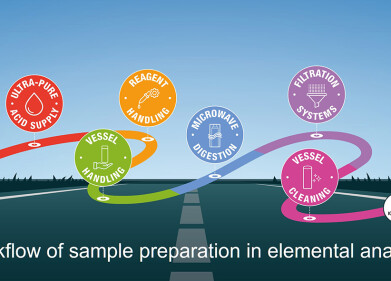Environmental Laboratory
How Are PFAS Monitored?
Nov 02 2021
Per- and polyfluoroalkyl substances, or PFAS, are a group of several thousand chemicals which are entirely manmade. Developed for a range of different purposes, including as non-stick coating on cookware, an ingredient in firefighter foam and as an additive for paints, waxes and other products, PFAS have been proven to persist in our environment for an extremely long time.
Indeed, the half-life of some PFAS is not known by scientists, while others are believed to endure for a thousand years or more before they decompose. For this reason, they have come to be known colloquially as “forever chemicals” and both the scientific community and regulatory bodies have taken an increased interest in monitoring them. But how exactly is it done?
Full of challenges
Analysis of water samples generally involves separation and identification of every individual component present in the sample. This kind of targeted testing is a painstaking process and involves sophisticated equipment, meaning it can only be carried out in a laboratory by trained researchers. It can be incredibly time-consuming at the best of times, but it’s perhaps even more onerous with PFAS.
That’s because there are currently more than 4,700 different types of PFAS known to man. As such, monitoring their presence and quantifying their concentrations in water samples can be a labour-intensive process. For that reason, scientists are always developing new detection methods and following regulatory measures to ensure they deliver their results in the fastest yet most accurate way possible.
Different approaches
Although PFAS have been used for decades, it is only fairly recently that we have become aware of the potential hazards associated with their widespread presence and remarkable longevity. As such, techniques for monitoring them have not been standardised between countries – or even between different research facilities and learning institutions within the same national borders.
One of the more established methods of doing so is through a mixture of liquid chromatography in tandem with mass spectrometry (LC/MS/MS) and solid phase extraction (SPE). First developed by the Environmental Protection Agency (EPA) in 2009, this method is capable of detecting dozens of PFAS in drinking water and has been refined several times in order to expand its catalogue of chemicals.
New developments
However, scientists have been exploring alternative methods of monitoring PFAS of late. One of the most promising of these is the use of an Agilent eMethod, which builds upon the LC/MS/MS with electrospray ionization (ESI) to optimise and accelerate its results. By leveraging the vast catalogue of PFAS that previous techniques have contributed to, the eMethod is capable of analysing samples more quickly and effectively.
What’s more, the tools supplied by Agilent are guaranteed to be free from PFAS in their own composition. This avoids the potential for results to become distorted or corrupted by the chemicals being present in the very instrumentation intended to measure them, providing greater clarity for researchers during their work.
Digital Edition
AET 28.2 April/May 2024
May 2024
Business News - Teledyne Marine expands with the acquisition of Valeport - Signal partners with gas analysis experts in Korea Air Monitoring - Continuous Fine Particulate Emission Monitor...
View all digital editions
Events
Jul 10 2024 Birmingham, UK
Jul 21 2024 Cape Town, South Africa
Australasian Waste & Recycling Expo
Jul 24 2024 Sydney, Australia
Jul 30 2024 Jakarta, Indonesia
China Energy Summit & Exhibition
Jul 31 2024 Beijing, China


















